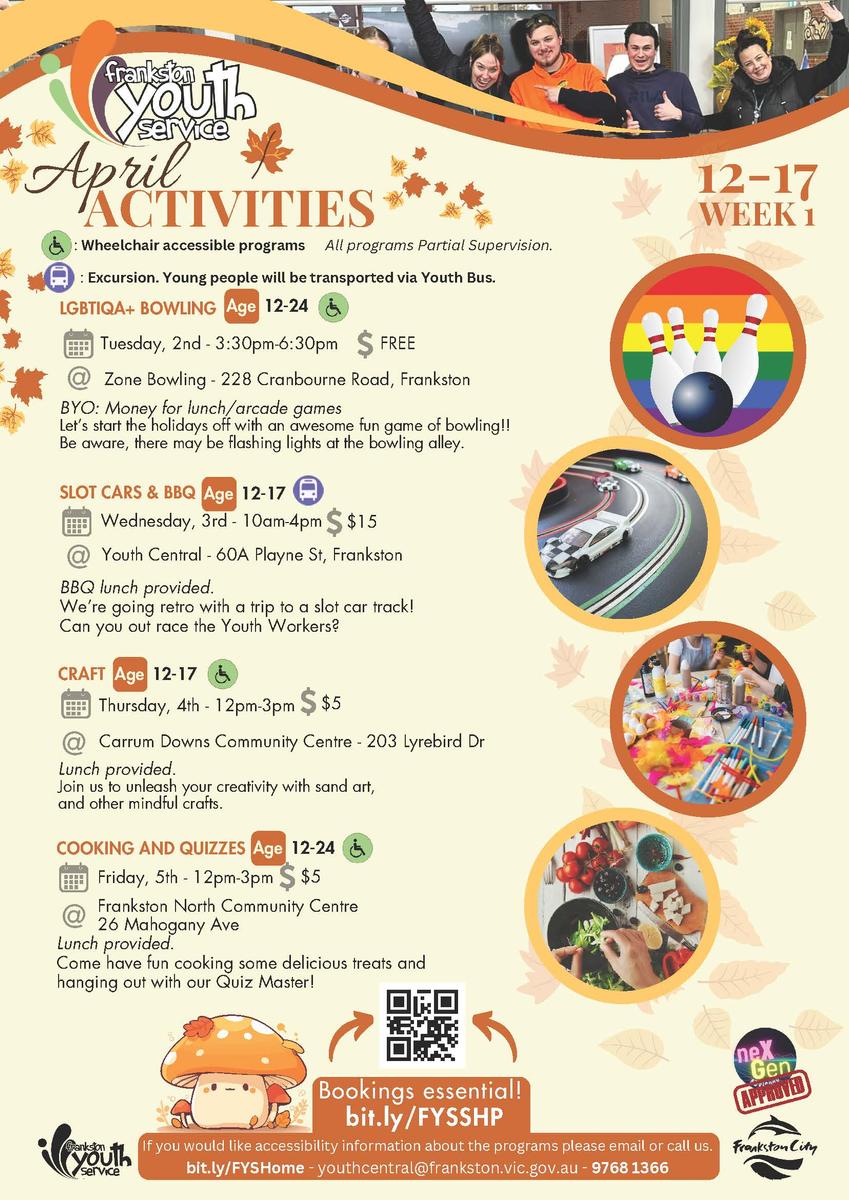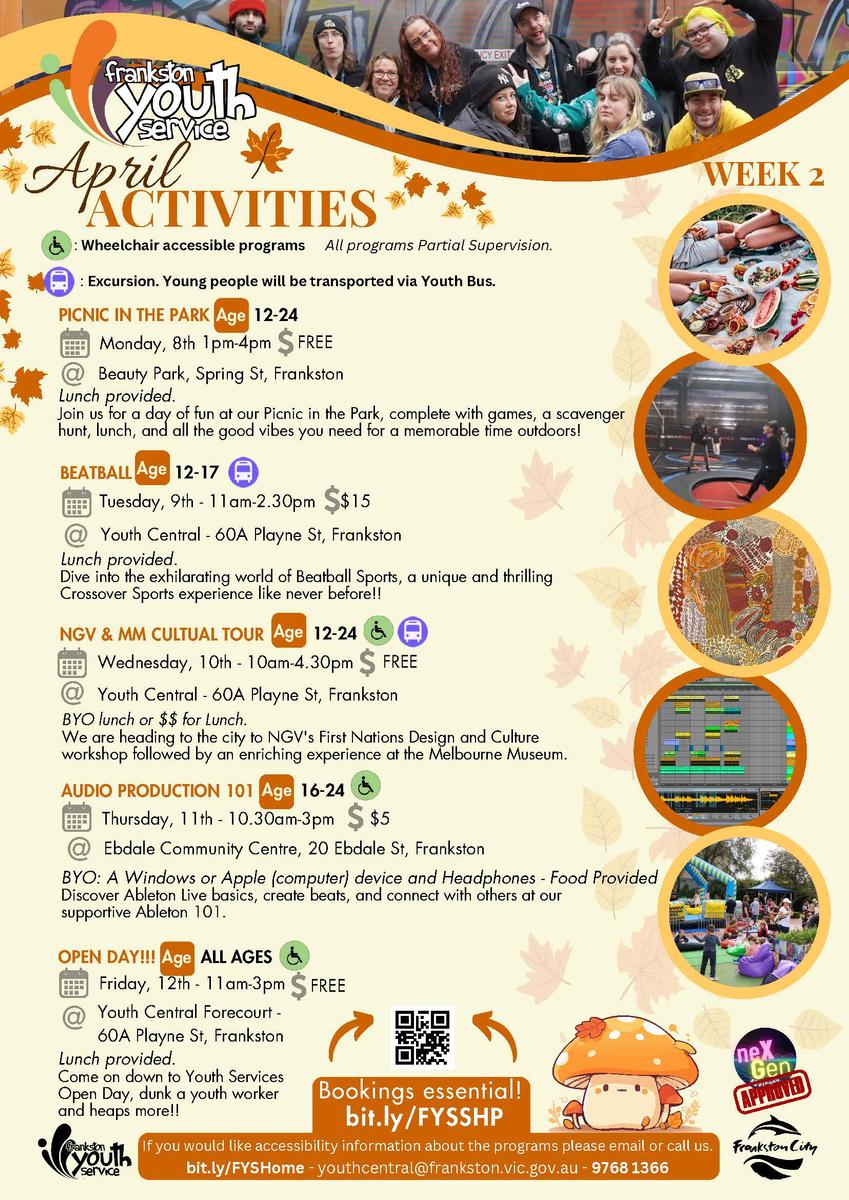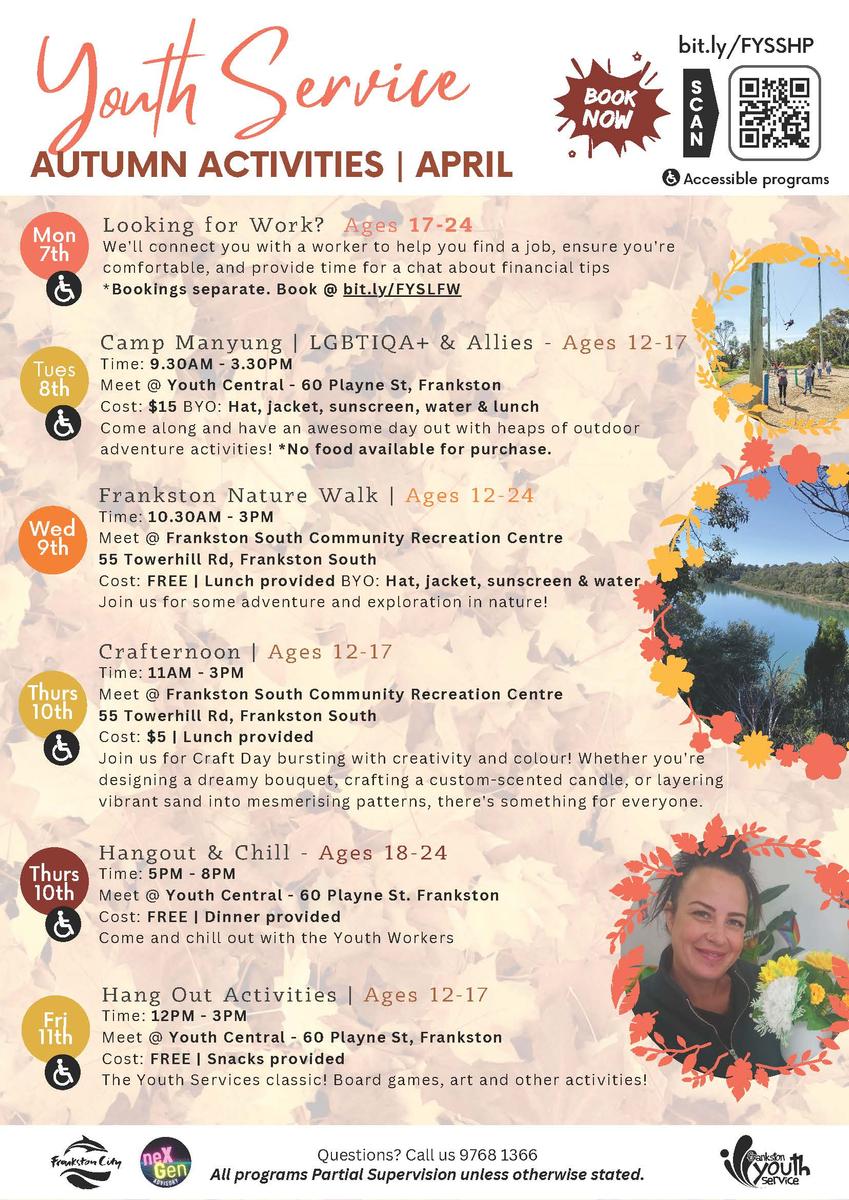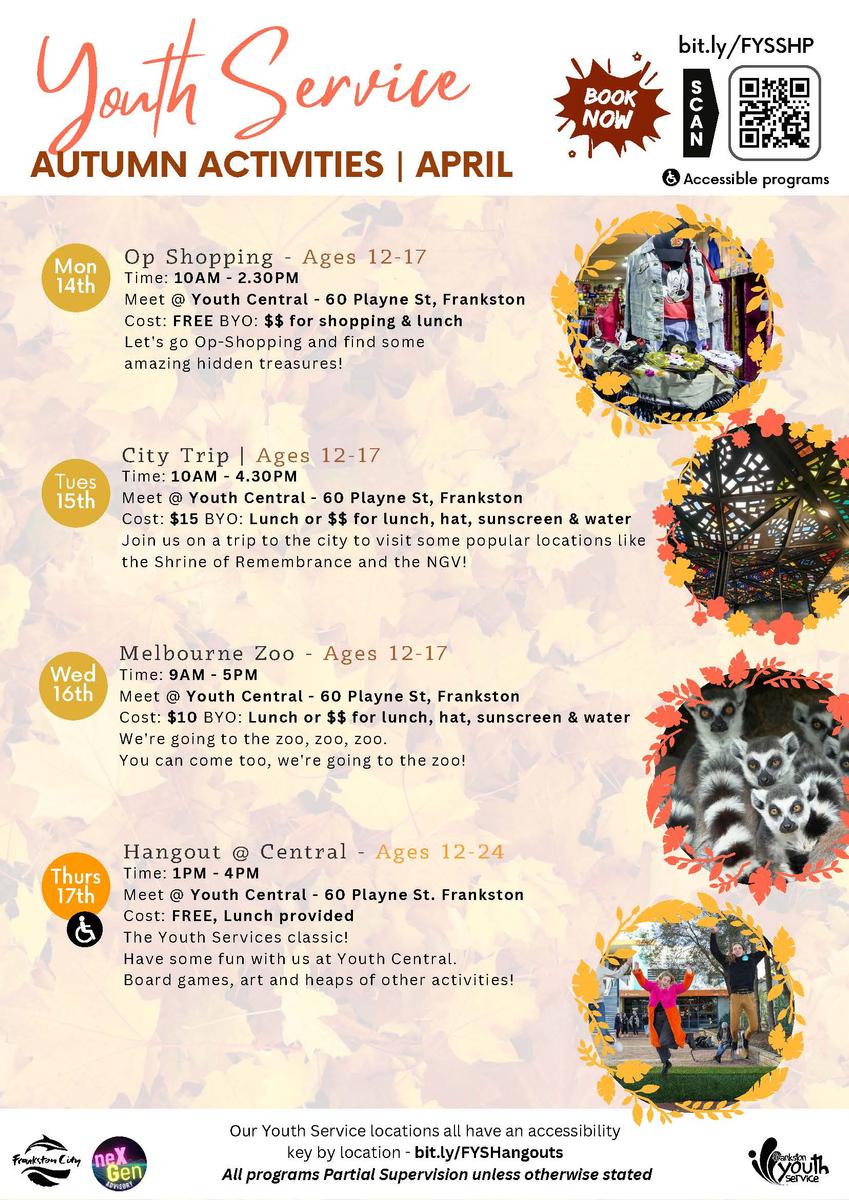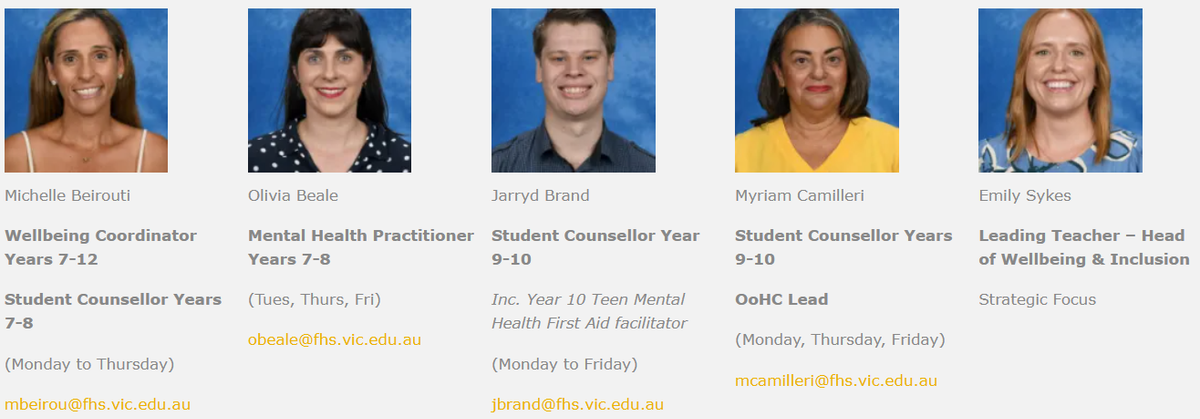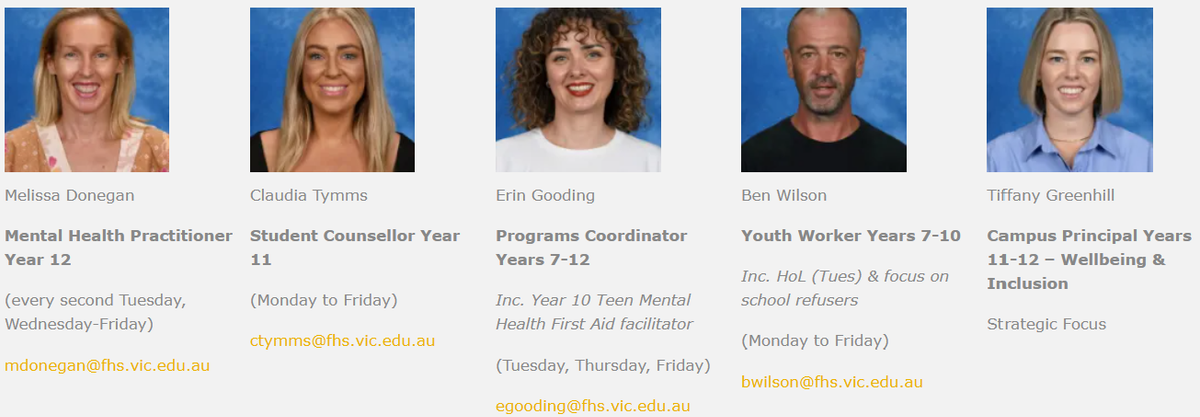WELLBEING Update
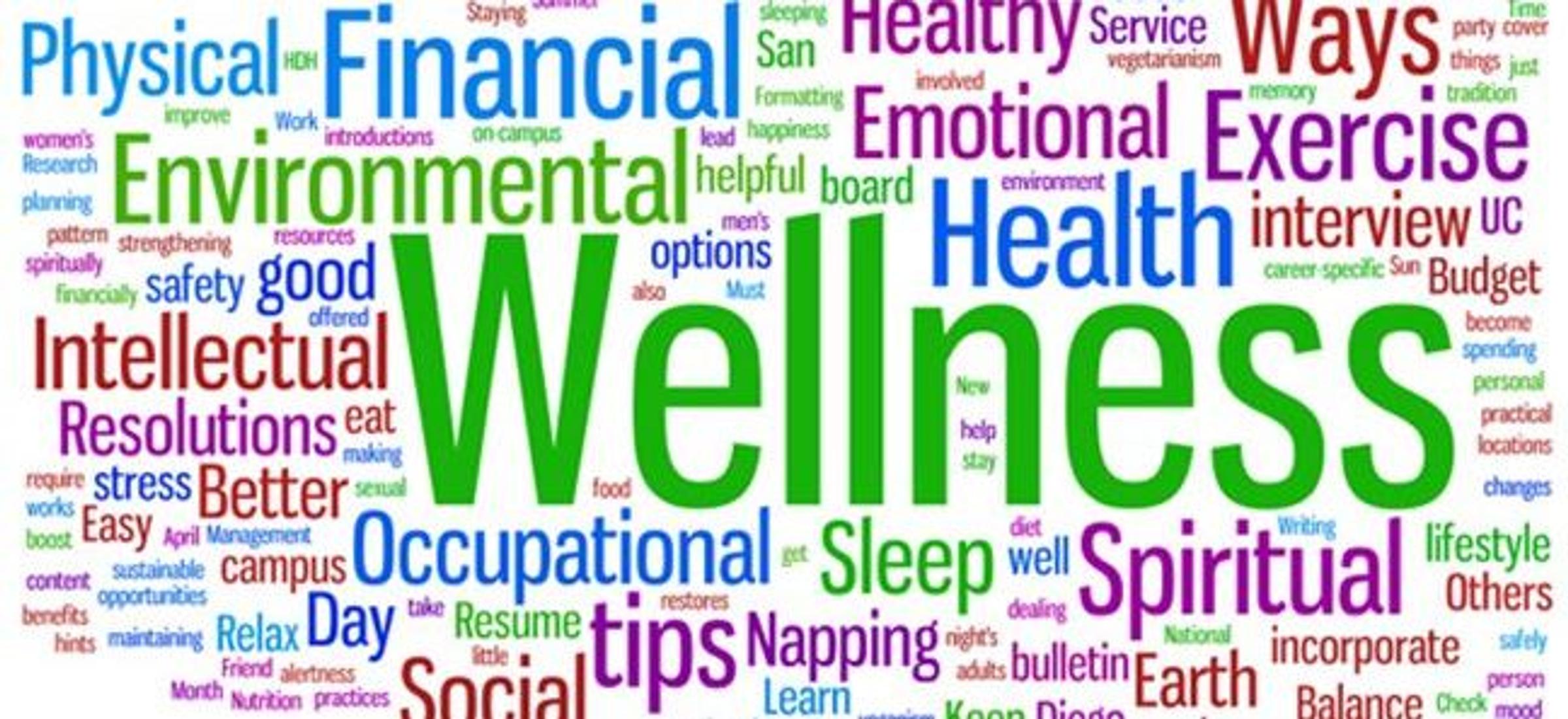
Frankston Youth Service - Autumn Holiday Activities
At Frankston High School we prioritise wellbeing for everyone, every day!
Wellbeing – Roles and Responsibilities
Student
- Use strategies to enhance physical and social health and wellbeing including healthy sleep habits and routines, nutritious and balanced diet, engaging in physical activity, building and maintaining social connections, appropriate technology use and positive coping strategies.
- Strive for Optima Semper by embracing learning, engaging in reflection, setting aspirational goals and challenging oneself.
- Develop emotional awareness and proactively manage stress and emotions through self-awareness and self-regulation strategies.
- Seek support from teachers, friends, Sub School, Wellbeing or external supports when needed.
- Promote a supportive and inclusive environment through peer support and modelling respectful behaviour.
- Participate in school or community activities to improve connection and belonging.
Parent/Carer
- Model and encourage positive physical and social health and wellbeing for students including healthy sleep habits and routines, nutritious and balanced diet, engaging in physical activity, maintaining social connections, appropriate technology use and positive coping strategies.
- Promote and support regular school attendance and consistently check in with students, encourage conversations about learning progress, reflection and personal goals.
- Demonstrate and discuss effective stress management techniques, such as mindfulness, relaxation exercises, and healthy breaks, to help students build their own toolkit for managing stress.
- Care for the student by monitoring behaviour and activities outside of school to optimise safety, positive wellbeing and learning.
- Engage in regular communication with teachers and attend parent information sessions and meetings to implement effective strategies for learning and wellbeing.
- Support students in exploring hobbies and interests outside of academics, which can provide balance, joy, and a sense of accomplishment and community.
Teacher
- Model and encourage positive physical and social health and wellbeing for students and peers including healthy sleep habits and routines, nutritious and balanced diet, engaging in physical activity, maintaining social connections, appropriate technology use and positive coping strategies.
- Engage in ongoing professional learning to promote student and staff wellbeing.
- Dedicate time to teacher self-care
- Draw on the High Impact Wellbeing Strategies which includes building a positive relationship with students, recognising diverse learning styles and behaviours, and adapting teaching strategies and pedagogy to support learning.
- Implement adjustments and strategies from Learning Needs Profiles, Individual Education Plans, Behaviour Support Plans, and/or Wellbeing Support Plans to ensure students’ needs are met.
- Practice the Notice, Inquire, Respond Model to check-in with students, monitor their wellbeing and document via Compass.
- Adhere to Mandatory Reporting responsibilities.
Wellbeing
- Provide one-on-one counselling to students who require support.
- Complete Risk Assessments and develop Student Wellbeing Support plans where required.
- Adhere to Mandatory Reporting responsibilities, complete ISOC reports and inform or consult the Sub School Campus Principal.
- Attend fortnightly Wellbeing Meetings with Sub-Schools and Campus Principals to share information, monitor wellbeing trends, and provide consultation and responses to emerging needs.
- Facilitate communication between students, parents/carers, Sub School and external providers to ensure wellbeing strategies are implemented.
- Dedicate time to personal self-care.
- Contribute to the Whole School Approach to Wellbeing by amplifying the wellbeing team’s influence throughout the school, link wellbeing efforts with broader staff and student community initiatives, and modelling and encouraging evidence-based productive wellbeing strategies and tools.
- Develop and deliver programs to meet specific student needs at a Tier 1 and Tier 2 level.
- Support staff and students during crises by implementing wellbeing strategies aligned with the Emergency Management Planning policy. Provide immediate intervention, manage the emotional impact, and ensure a supportive environment. Post-crisis, collaborate with staff and external services to support recovery, debrief, and assess ongoing needs for student and staff resilience.
OUR WELLBEING TEAM


